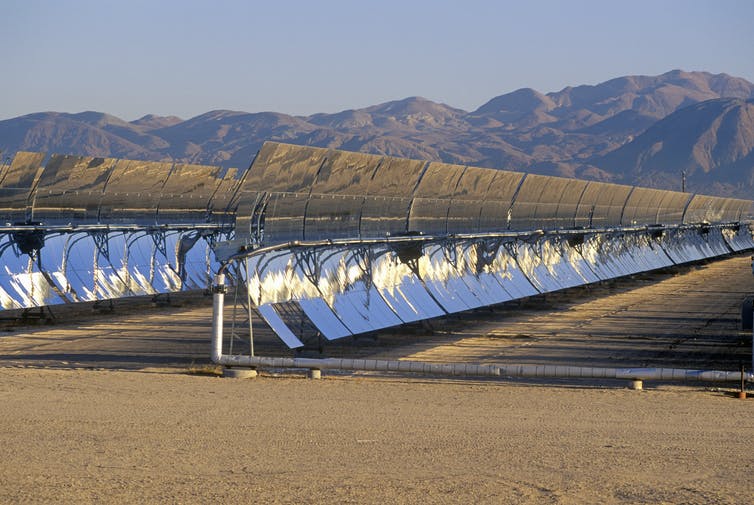 Author: enior lecturer, School of Engineering, University of Portsmouth
Author: enior lecturer, School of Engineering, University of Portsmouth
Amazon Prime Air famously used a drone in the run-up to Christmas 2016 to deliver a streaming stick and a bag of popcorn to a customer in Cambridge, just 13 minutes after the order was placed. The use of drones to deliver goods is slowly becoming a reality, as numerous retail giants and postal services are conducting trials across the globe. In the not so distant future, they may even deliver takeaway food.
Drones may be the future, but are they a more environmentally-friendly way for us to receive ordered goods?
A group of US-based researchers say they are, but only when small drones are used. Joshuah Stolaroff, Constantine Samaras and their colleagues have recently published a study in the journal Nature Communications, in which they show that a delivering a small package (0.5kg) by a regular quadcopter drone leads to lower carbon dioxide emissions per package than delivery by diesel, gas or even electric truck. On the other hand, results are less flattering for large “octocopter” drones, whose carbon footprint per package is generally higher than that of trucks.
Both small and large drones are assumed to be charged using electricity from the grid at the location where they operate. Therefore, whether drone delivery is more environmentally-friendly than its alternatives primarily depends on the means of producing electricity locally.
For example, the researchers consider a large drone charged in California, where much of the electricity is renewable or relatively low-carbon. There, this large drone would yield lower carbon dioxide emissions than a diesel or natural gas vehicle. However, if an electric vehicle is used (charged from the same low carbon grid), large drone delivery emissions are higher.

Things are rather different in the state of Missouri, where 70 per cent of electricity comes from coal. There, delivery by gas or diesel trucks remains the environmentally-friendly option, with notably lower carbon footprints than an electric van or large drone. Yet in all cases considered, delivery by a small drone led to minimum carbon emissions.
The study looks at the life cycle of a small drone, accounting for the environmental footprint of everything from the raw materials and energy used to make it, through to the resources that keep it running day to day. The researchers found that the electricity actually used to fly the drone accounts for just 10% of its overall greenhouse gas emissions. Most of its emissions can be attributed to the electricity consumption of the warehouse the drone has to visit for package collection and charging. For larger drones, however, the equation changes and transportation electricity becomes more significant, comparable to the carbon footprint of the warehouse.
Nonetheless, medium and large drones are an attractive option for numerous industries. Boeing, for instance, has recently unveiled a prototype able to carry 200kg. In China, online shopping giant JD.com is already delivering packages up to 30kg by drone, and the company is even working on a 1,000kg delivery drone (the weight of a small car).
JD announces new drone agreements, including for urban testing, paving the way for national #drone delivery https://t.co/t4rHGIKRfp $jd pic.twitter.com/in8UP8hPhP
— JD.com (@JD_Corporate) September 14, 2017
If drones are to progress into the freight industry mainstream, battery power remains the major obstacle. Small drones currently use lithium polymer batteries, but Stolaroff and colleagues forecast significant development in this area due to ambitious targets set by the US Department of Energy, as the delivery range is likely to increase in coming years. In addition, gas-powered drones and those utilising hydrogen fuel cell technology, as well as hybrid solutions, are emerging on the market.
Drones are a relatively new technology but they’ve already been made significantly lighter and more efficient. And at the smaller end of the scale, they may already be the greenest option. The latest research reaches roughly the same conclusion as a 2017 study from the University of Washington, Seattle, which found that small drones reduce CO₂ emissions for deliveries a short distance from the warehouse, or where only a few stops are required.
As things currently stand, large drones do not reduce the energy used in the freight sector. But this depends on how electricity is generated locally (cleaner electricity means greener drones), and trucks remain a more climate-friendly option when the delivery route has multiple stops. Perhaps unsurprisingly, driving to pick up a parcel from the shop yourself appears to be the most harmful option for the environment.





